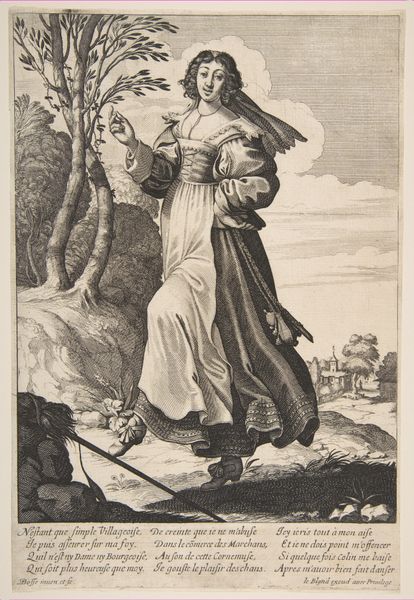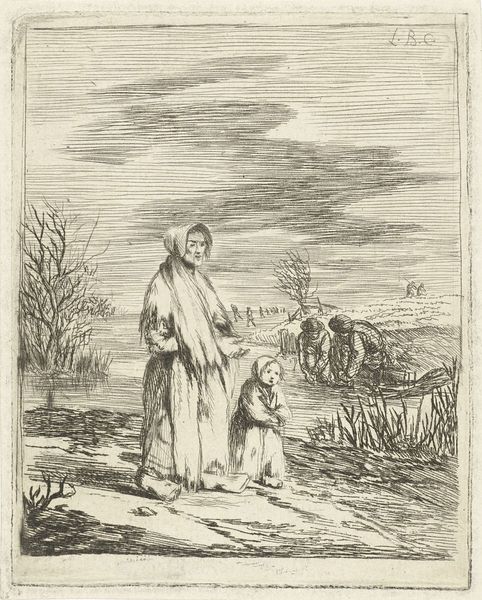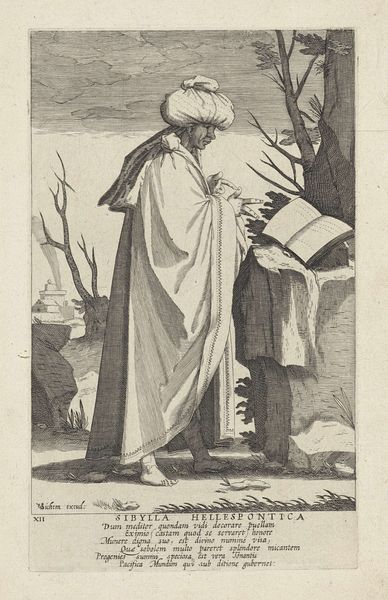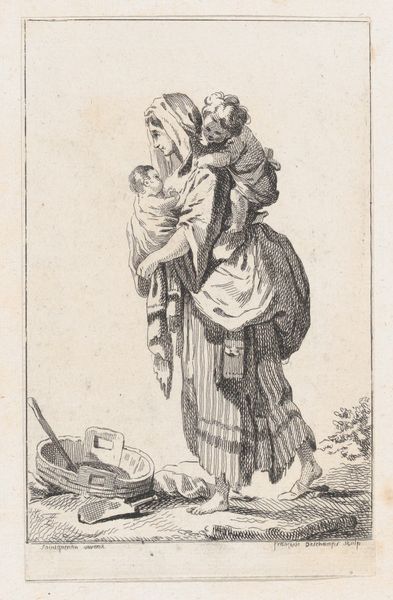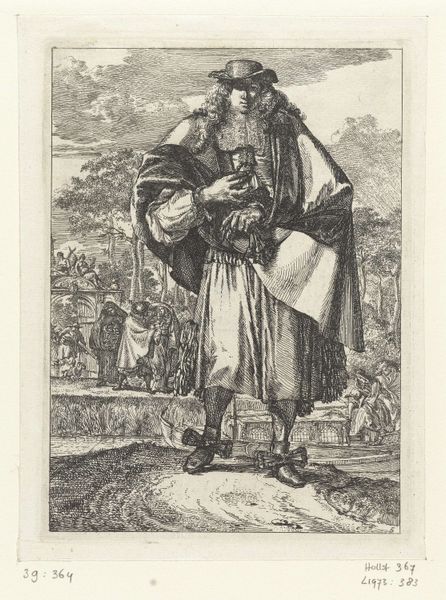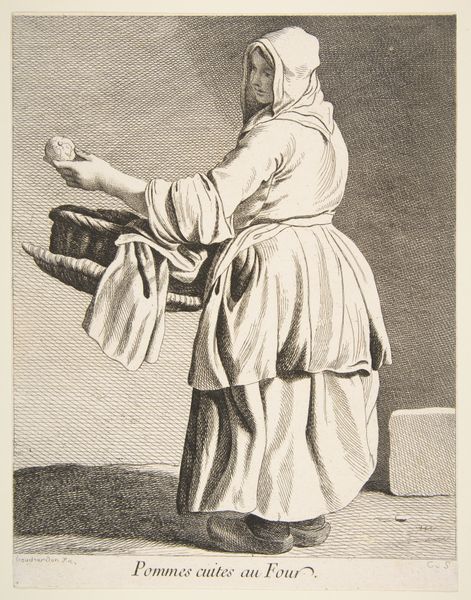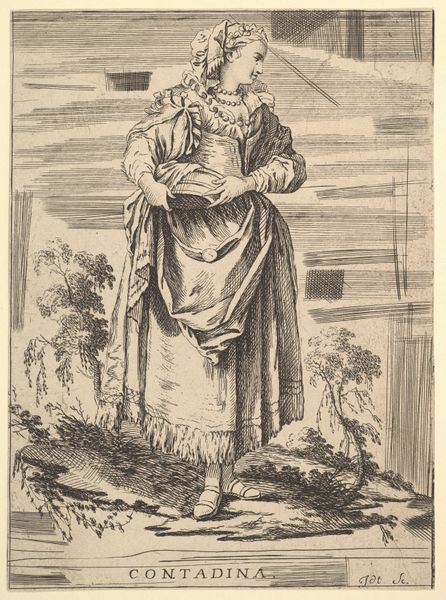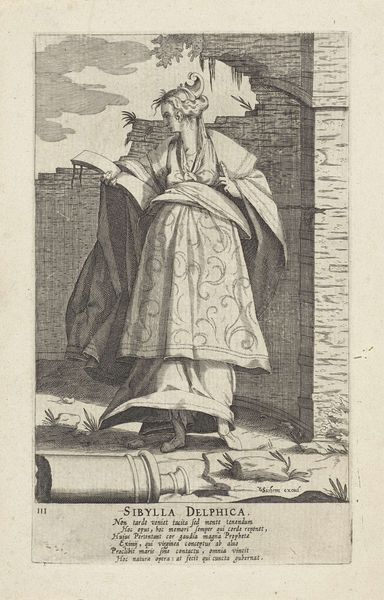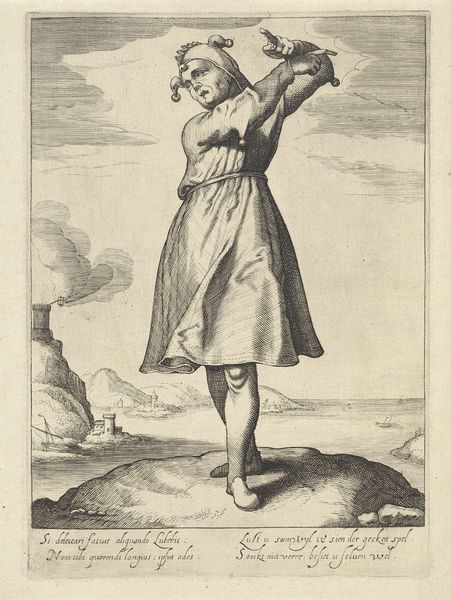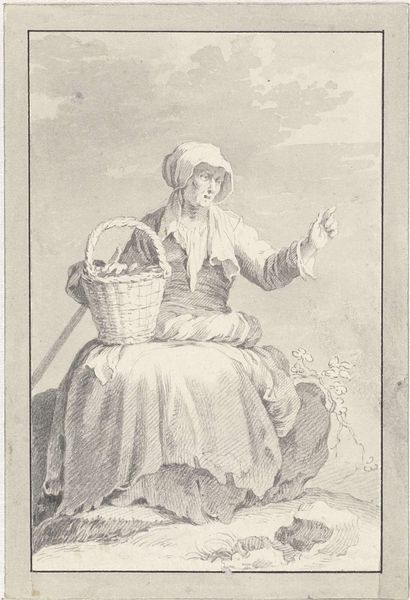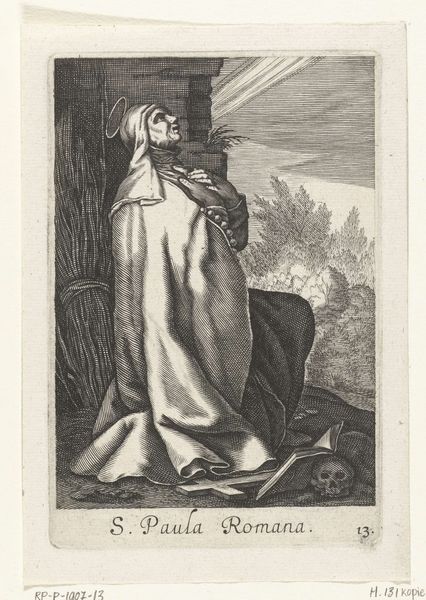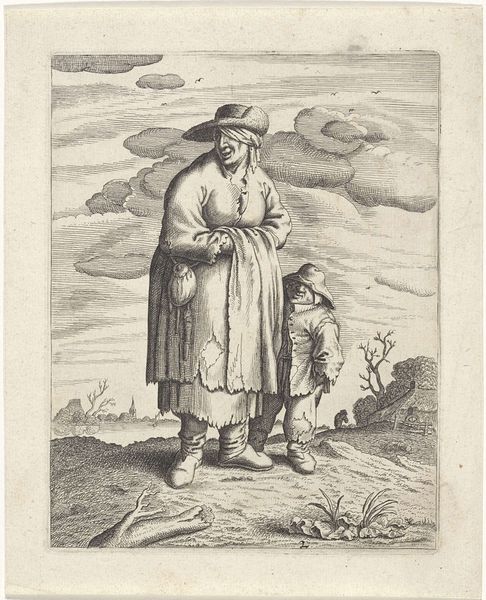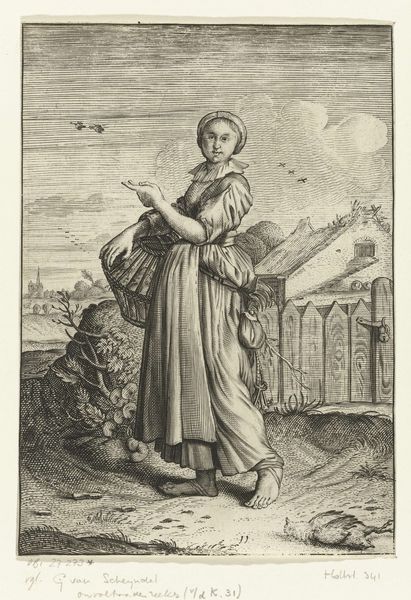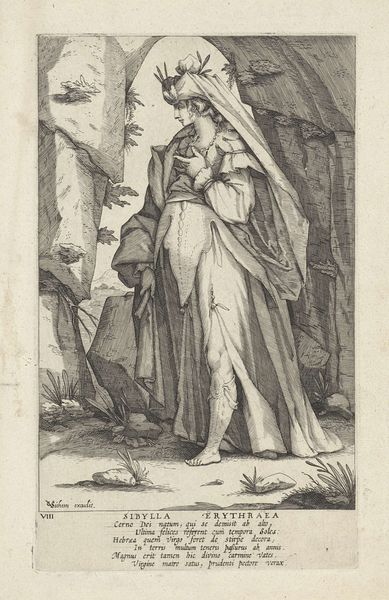
print, engraving
#
portrait
#
baroque
# print
#
old engraving style
#
figuration
#
history-painting
#
engraving
Dimensions: height 212 mm, width 147 mm
Copyright: Rijks Museum: Open Domain
This print, Heilige Praxedis, was made by Theodoor Galle around the turn of the 17th century, using the intaglio process. This involved cutting lines into a copper plate, inking the surface, and then wiping it clean so that ink remained only in the recesses. The plate was then pressed onto paper. The image is dominated by a figure of Saint Praxedis, holding a sponge soaked in what is presumed to be the blood of Christian martyrs. Galle’s technique has a powerful impact here. The cross-hatched lines create a sense of volume, especially in Praxedis’s drapery. But the linearity of the medium also lends a certain hardness to the image, a graphic quality appropriate to the gruesome subject matter. Prints like this were commercial products, made in multiples in a workshop setting. Galle was one of many skilled artisans who made their living this way. Appreciating the process helps us to look beyond the image itself, and to recognize the vital contributions of skilled labor to the making of art.
Comments
No comments
Be the first to comment and join the conversation on the ultimate creative platform.
